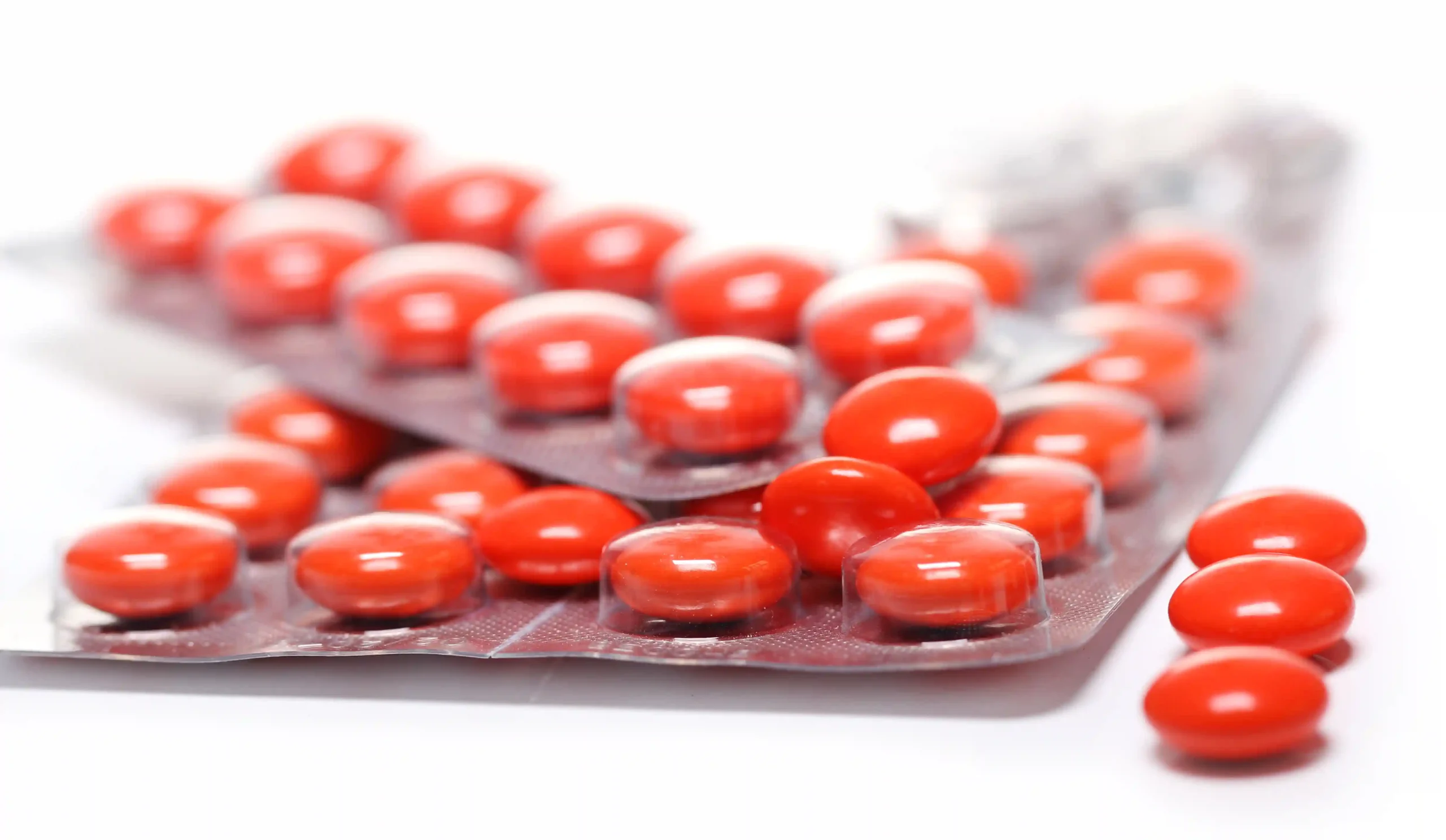Hey there, health enthusiasts and curious minds! 👋 Ever wondered about that sneaky little compound hiding in your body, pulling strings like a puppet master of inflammation? Well, buckle up, buttercup, because we’re about to dive deep into the wild world of the arachidonic acid pathway. Trust me, it’s way more exciting than it sounds!
What in the World is Arachidonic Acid?
Alright, let’s start with the basics. Arachidonic acid is like that one friend who always shows up uninvited to parties – it’s everywhere in your body, whether you like it or not. It’s a polyunsaturated fatty acid that’s hanging out in your cell membranes, just waiting for its moment to shine (or wreak havoc, depending on how you look at it).
But here’s the kicker: your body is actually pretty darn good at making its own arachidonic acid. It’s like having a built-in factory for this stuff. However, we also get a good chunk of it from our diet. Foods high in arachidonic acid include meat, eggs, and certain fish. So, if you’re a fan of steak and eggs for breakfast, congratulations! You’re probably getting a hefty dose of arachidonic acid with your morning coffee.
The Arachidonic Acid Pathway: A Rollercoaster of Inflammation
Now, let’s talk about the star of our show: the arachidonic acid pathway. Imagine this pathway as a complex factory line, with arachidonic acid as the raw material. When your body decides it’s time to kick up some inflammation (which, by the way, isn’t always a bad thing), it releases arachidonic acid from cell membranes. This is where the real magic happens.
The arachidonic acid metabolism is like a choose-your-own-adventure book. Depending on which enzymes get involved, arachidonic acid can transform into a variety of compounds, each with its own special inflammatory superpowers. It’s like arachidonic acid is the Clark Kent of your body, and these enzymes are the phone booths that turn it into Superman (or Supervillain, in some cases).
The Main Players in the Arachidonic Acid Cascade
Let’s break down the key enzymes in this inflammatory party:
- Cyclooxygenase (COX): This enzyme is like the DJ of inflammation. It turns arachidonic acid into prostaglandins, which are responsible for fever, pain, and swelling. Ever popped an ibuprofen? You’ve just crashed this enzyme’s party.
- Lipoxygenase (LOX): Think of LOX as the bouncer of the inflammatory club. It produces leukotrienes, which are involved in allergic reactions and asthma. When LOX gets overexcited, you might find yourself reaching for that inhaler.
- Cytochrome P450: This enzyme is like that friend who always brings something unexpected to the party. It produces epoxyeicosatrienoic acids (EETs) and hydroxyeicosatetraenoic acids (HETEs), which can either promote or reduce inflammation, depending on the situation.
The arachidonic acid cascade is a complex process that involves multiple steps and enzymes. Understanding this cascade is crucial for grasping how inflammation works in our bodies and how certain medications target specific parts of the arachidonic acid pathway.
The Good, The Bad, and The Ugly of Arachidonic Acid
Now, you might be thinking, “Geez, this arachidonic acid sounds like bad news!” But hold your horses, partner. Like most things in life, it’s not all black and white.
The Good:
Believe it or not, arachidonic acid benefits are actually a thing. This fatty acid is crucial for brain health, muscle growth, and even keeping your skin looking fabulous. In fact, some bodybuilders swear by arachidonic acid supplements for muscle building. (More on that later, so stick around!)
The Bad:
Too much of a good thing can be, well, not so good. When the arachidonic acid pathway goes into overdrive, it can lead to chronic inflammation. And let’s face it, chronic inflammation is about as welcome as a skunk at a garden party.
The Ugly:
In some cases, an overactive arachidonic acid pathway can contribute to serious health issues like cardiovascular disease, arthritis, and even certain types of cancer. Talk about a party pooper!
Arachidonic Acid and Inflammation: A Love-Hate Relationship

Let’s get one thing straight: inflammation isn’t always the bad guy. In fact, it’s a crucial part of your body’s defense system. When you get a paper cut or catch a cold, inflammation is your body’s way of saying, “Don’t worry, I got this!”
But here’s where things get tricky. Sometimes, your body gets a little too enthusiastic with the whole inflammation thing. It’s like that one friend who doesn’t know when the party’s over and keeps dancing even after the music stops. This is where the arachidonic acid pathway comes into play.
When inflammation goes rogue, it’s often because the arachidonic acid pathway is working overtime. It’s like your body’s inflammatory response is stuck in high gear, churning out inflammatory compounds like there’s no tomorrow. And trust me, that’s not a party you want to attend.
The link between arachidonic acid and inflammation is well-established. In our bodies, oxygen and arachidonic acid interact to produce various inflammatory mediators. This process is a double-edged sword – necessary for healing and defense, but potentially harmful when chronically activated.
The Arachidonic Acid Paradox: Friend or Foe?
Here’s where things get really interesting. While we’ve spent a good chunk of this article painting arachidonic acid as the villain in our inflammatory story, it’s not all bad news. In fact, for some people, arachidonic acid supplements might actually be beneficial.
Arachidonic Acid and Bodybuilding: Muscles’ Secret Weapon?
Believe it or not, there’s a growing trend of arachidonic acid for bodybuilding. Some fitness enthusiasts swear by arachidonic acid supplements to enhance muscle growth and strength gains. The theory goes that the controlled inflammation caused by arachidonic acid can actually stimulate muscle building.
But before you rush out to buy arachidonic acid supplements, remember that the jury’s still out on this one. While some bodybuilders report positive results, more research is needed to fully understand the effects of enhanced arachidonic acid intake on muscle building.
The Low-Down on Low Arachidonic Acid
On the flip side, some people might benefit from lowering their arachidonic acid intake. If you’re dealing with chronic inflammation or certain health conditions, your doctor might recommend a low arachidonic acid diet.

Foods to watch out for if you’re trying to keep your arachidonic acid levels in check include:
– Red meat
– Egg yolks
– Certain types of fish (like tilapia and catfish)
– Processed foods (especially those high in vegetable oils)
But remember, it’s all about balance. Completely eliminating arachidonic acid from your diet isn’t the goal (or even possible, really). The key is finding the right balance for your body.
High Arachidonic Acid: When Too Much of a Good Thing Goes Bad
Now, let’s talk about what happens when you’ve got high arachidonic acid levels in your body. It’s like having too many cooks in the kitchen – things can get a bit chaotic!
High arachidonic acid symptoms can vary from person to person, but some common signs include:
– Increased inflammation throughout the body
– Joint pain and stiffness
– Skin issues like rashes or eczema flare-ups
– Digestive problems
– Mood changes (yeah, who knew your fatty acids could mess with your mood?)
If you’re experiencing these symptoms, it might be worth chatting with your doc about getting your arachidonic acid levels checked. But don’t panic! There are ways to manage high arachidonic acid levels.
How to Lower Arachidonic Acid: Taming the Beast
So, you’ve found out you’ve got high arachidonic acid levels. Now what? Don’t worry, my friend. I’ve got some tips on how to lower arachidonic acid that’ll have you feeling better in no time:

-
Diet Changes:
Remember those arachidonic acid foods to avoid we talked about earlier? Now’s the time to put that knowledge into action. Cut back on red meat, egg yolks, and processed foods. Instead, load up on foods that can help lower inflammation, like fruits, vegetables, and fatty fish.
-
Omega-3 Fatty Acids:
These guys are like the yin to arachidonic acid’s yang. They can help balance out the inflammatory effects of arachidonic acid. You can find them in fish oil supplements or in foods like salmon, chia seeds, and walnuts.
-
Exercise:
I know, I’m starting to sound like a broken record here. But seriously, regular exercise can help regulate your body’s inflammatory response, including the arachidonic acid pathway.
-
Stress Management:
Chronic stress can throw your whole body out of whack, including your arachidonic acid levels. Find ways to chill out – meditation, yoga, or even just taking a few deep breaths can help.
-
Herbal Supplements:
Some herbs, like turmeric and ginger, have natural anti-inflammatory properties that might help balance out high arachidonic acid levels. But as always, check with your healthcare provider before starting any new supplements.
The Arachidonic Acid Lipid: More Than Just Inflammation
Now, let’s get a bit sciency for a moment. Arachidonic acid is actually a type of lipid, which is just a fancy word for fat. But this isn’t your average, run-of-the-mill fat. Oh no, arachidonic acid lipid is a superstar in the world of cellular function.
You see, arachidonic acid is associated with all sorts of important processes in your body. It’s not just about inflammation (although that’s a big part of its job). Arachidonic acid also plays roles in:
– Cell signaling (helping your cells communicate with each other)
– Brain function (it’s a major component of brain cell membranes)
– Blood clotting (helping your body stop bleeding when you get a cut)
– Muscle growth (which is why those bodybuilders are so interested in it)
So while we’ve been focusing a lot on the inflammatory aspects of arachidonic acid, it’s important to remember that it’s not all bad. Like many things in your body, it’s all about balance.
Arachidonic Acid Metabolites: The Next Generation
When we talk about the arachidonic acid pathway, we’re not just talking about arachidonic acid itself. We’re also talking about all the compounds that arachidonic acid turns into – its metabolites.
Arachidonic acid metabolites are like the children of arachidonic acid. Each one has its own unique personality and job to do in your body. Some of the key players include:
- Prostaglandins: These guys are involved in all sorts of processes, from regulating blood flow to helping with kidney function.
- Leukotrienes: These are the troublemakers that can cause inflammation in your airways, leading to asthma symptoms.
- Thromboxanes: These fellas play a role in blood clotting and blood vessel constriction.
- Lipoxins: These are actually anti-inflammatory compounds that can help resolve inflammation.
- Arachidonic acid-derived diols: These are lesser-known metabolites that are still being studied, but they might play roles in blood pressure regulation and kidney function.
Understanding these metabolites is crucial for developing new treatments for inflammatory conditions. By targeting specific parts of the arachidonic acid pathway, researchers hope to find ways to control inflammation without causing unwanted side effects.
The COX Arachidonic Acid Pathway: A Target for Pain Relief
You’ve probably heard of COX inhibitors before, even if you didn’t realize it. Drugs like ibuprofen and aspirin? Yep, they work by inhibiting the COX arachidonic acid pathway.
COX, or cyclooxygenase, is an enzyme that converts arachidonic acid into prostaglandins. By blocking this enzyme, COX inhibitors can reduce inflammation and pain. It’s like putting a roadblock on the arachidonic acid highway.
But here’s the thing – there are actually two types of COX enzymes: COX-1 and COX-2. COX-1 is involved in protecting your stomach lining, while COX-2 is more involved in inflammation. That’s why some newer pain medications target COX-2 specifically, to try and reduce side effects like stomach ulcers.
The Future of Arachidonic Acid Research
As we wrap up our journey through the twists and turns of the arachidonic acid pathway, it’s worth noting that this is still an active area of research. Scientists are continually uncovering new arachidonic acid metabolites and their roles in the body.
Some exciting areas of study include:
– The role of arachidonic acid-derived diols in various physiological processes
– How arachidonic acid is associated with different health conditions
– The potential of targeting specific enzymes in the arachidonic acid pathway for therapeutic purposes
Who knows? The next big breakthrough in understanding inflammation and health could come from unraveling more secrets of the arachidonic acid pathway.
Wrapping It Up: The Arachidonic Acid Balancing Act
So there you have it, folks – a whirlwind tour of the arachidonic acid pathway. From inflammation to muscle building, from pain relief to cellular communication, this little fatty acid plays a big role in keeping your body running smoothly.
Remember, when it comes to arachidonic acid, it’s all about balance. Too little, and your body might not function properly. Too much, and you could be dealing with chronic inflammation. The key is finding that sweet spot – and now you’ve got the knowledge to do just that!
Whether you’re looking to boost your gains at the gym, manage an inflammatory condition, or just understand your body better, understanding the arachidonic acid pathway is a great place to start. So go forth, armed with your new knowledge, and may your arachidonic acid levels always be just right!
And hey, the next time someone at a party brings up arachidonic acid (because that totally happens at all the cool parties), you’ll be ready to drop some serious knowledge bombs. Just try not to let all that inflammatory talk kill the vibe, okay?



